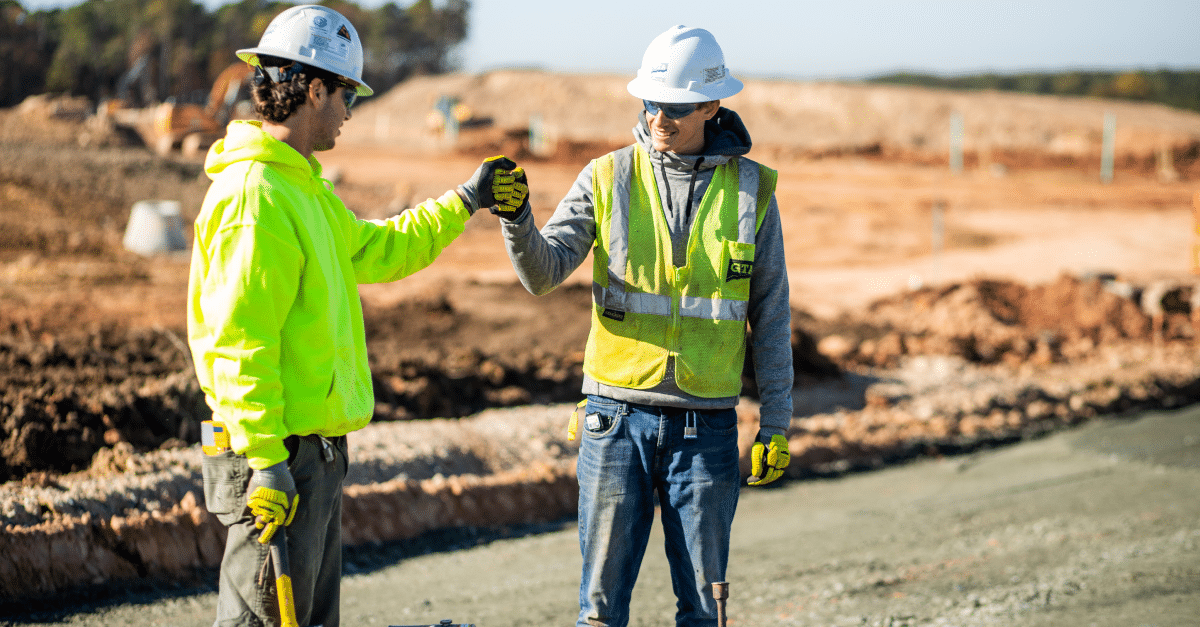The Ultimate Guide To Geotechnical Engineering For Construction Projects
The Ultimate Guide To Geotechnical Engineering For Construction Projects
Blog Article
How Geotechnical Engineering For Construction Projects can Save You Time, Stress, and Money.
Table of ContentsLittle Known Facts About Geotechnical Engineering For Construction Projects.The Single Strategy To Use For Geotechnical Engineering For Construction ProjectsThe Ultimate Guide To Geotechnical Engineering For Construction ProjectsGet This Report about Geotechnical Engineering For Construction ProjectsThe Basic Principles Of Geotechnical Engineering For Construction Projects About Geotechnical Engineering For Construction ProjectsNot known Details About Geotechnical Engineering For Construction Projects See This Report about Geotechnical Engineering For Construction Projects
Synchronizing with this enhanced intricacy comes geological and ecological aspects that influence the design of the foundation, which is perhaps one of the most integral part of any kind of development. People need to trust that buildings, bridges, and roads will stand the examination of time. A Geotechnical designer encourages on how a structure can best be supported offering its special conditions What's concealed listed below the surface of the ground is likely the most essential piece of information that a Geotechnical Designer seeks.These examples are then examined by the laboratory to figure out soil structure (Geotechnical Engineering for Construction Projects). The failure of sand, silt, clay, and other products present in the soil, helps the designer establish what distinct attributes the website has and what the effects of those may be. Certainly dirt structure is only one examination that can be done on samples
Some Known Details About Geotechnical Engineering For Construction Projects
Based upon these tests, there may be more dirt borings that are drilled, or the designer might have adequate info from the initial tests to make a recommendation to the customer on just how best to continue with their task. Results are usually reported through borings logs which show the dirt composition and characteristics at a selection of midsts.
Geotechnical designers are accountable for comprehending the residential properties of all-natural resources and utilizing this knowledge to develop risk-free, cost-effective layouts for construction tasks. It is an important part of any type of civil engineering task, as it is used to determine the suitability of a website for building and construction and to make certain the framework's safety.
This consists of performing lab tests on the samples and making use of geophysical techniques such as seismic refraction and electrical resistivity surveys. This information is used to analyze the site's suitability for building and to identify the kind of structure that need to be utilized. Geotechnical engineering assesses soil conditions, identifies prospective dangers, chooses an ideal structure system for the suggested structure, and identifies the most effective structure style for a given project.
The Buzz on Geotechnical Engineering For Construction Projects
The framework might become unstable or collapse without correct dirt stabilisation, leading to costly repairs and prospective injury. The stablizing process includes making use of numerous techniques to improve the security of the dirt, such as compaction, grouting, and the addition of enhancing products. Without soil stabilization, the risks associated with building and construction jobs would be much greater, and the outcomes a lot less trusted.
It is a procedure used to improve the buildings of soils. Geotechnical designers conduct site examinations to assess the dirt's residential properties and identify possible threats. They additionally develop foundations and various other structures that require to be constructed on the website, taking into consideration the dirt's features. They develop and carry out soil stablizing methods, such as including concrete, lime, or other stabilizing agents, to enhance the dirt's stamina and stability.
Some Ideas on Geotechnical Engineering For Construction Projects You Need To Know
Geotechnical engineers are important in aiding to make sure that dirt stabilization is done appropriately to ensure that the structure is safe and safe. Geotechnical design is additionally used to evaluate soil conditions and recognize possible dangers. This includes evaluating prospective flooding, landslides, and other all-natural calamities that can influence the structure.
Geotechnical engineers use this knowledge to carry out website investigations, dirt, and rock screening, and to translate the outcomes to identify the appropriate style criteria for a project. This info is made use of to make certain that the foundation, preserving wall surfaces, inclines, and other structures improved or within the subsurface materials have adequate security and resistance to exterior loads, such as earthquakes, wind, and water.
These frameworks need a deep understanding of the habits of the subsurface products, as well as the capacity to manage the influence of excavation and construction on the surrounding environment. Geotechnical engineers utilize their expertise to identify the ideal design parameters for these frameworks, such as the dimension and shape of the passage, the strength of the sustaining rock, and the kind and amount of assistance needed.
Along with the design and construction of structures, geotechnical design also plays an essential role in the rehab and maintenance of existing structures. As frameworks age, they might experience degradation or various other problems that influence their stability and performance. Geotechnical designers utilize their experience to analyze the problem of these frameworks, determine the reasons for the problems, and develop strategies to resolve them.
Indicators on Geotechnical Engineering For Construction Projects You Should Know
In this write-up, I will go over the role of geotechnical design and the sorts of problems geotechnical engineers fix. Geotechnical engineers (geotechs) are associated with virtually every kind of civil engineering task. Nevertheless, every structure is sustained by dirt or rock unless it is floating, flying, or dropping.
Geotechs are typically most included at the start of a project. Geotechnical Engineering for Construction Projects. Several of the tasks that a geotech might be in charge of are examining subsurface problems, figuring out needed laboratory testing of dirt and rock, translating the subsurface expedition results, and writing records that document the site problems and give referrals for structures, fill specs, incline security, etc
It is not uncommon for geotechnical engineers to concentrate on just one of the areas detailed above and study that subject their entire occupation. Geotechnical design is an essential element of any kind of civil engineering job. Regardless of exactly how fantastic a framework is built, it will not be wonderful for long if the these details foundation is poor.
Not known Details About Geotechnical Engineering For Construction Projects

Frequently, points that might not appear important end up being essential years later when issues develop. One last point to bear in mind: geotechnical design is wed to geology. Despite how terrific your design knowledge is, if something vital is missed in the geologic characterization at a website, your proficiency may not save you.
He delights in crawling around on any landslide he can find and spending time fly fishing on the water. I wish you appreciated this week's Homepage blog post by guest writer Jese Vance. I wish you'll join us.
Not known Facts About Geotechnical Engineering For Construction Projects

It is very important to develop the foundation to endure natural and synthetic lots. Tons can be upright or side. It is essential to know the soil problem before creating the type and depth of foundation needed for the framework. In order to know the subsurface soil condition, a geotechnical investigation is called for.
9 Easy Facts About Geotechnical Engineering For Construction Projects Described
As soon as the test results come, the Geotechnical Engineer evaluations the report, which outlines the dirt and rock homes groundwater condition and the associated threats. The sort of foundation needed to build the structure is after that established. Based on the recommendation of the Geotechnical Engineer, the structural engineer then creates site the framework.
Report this page